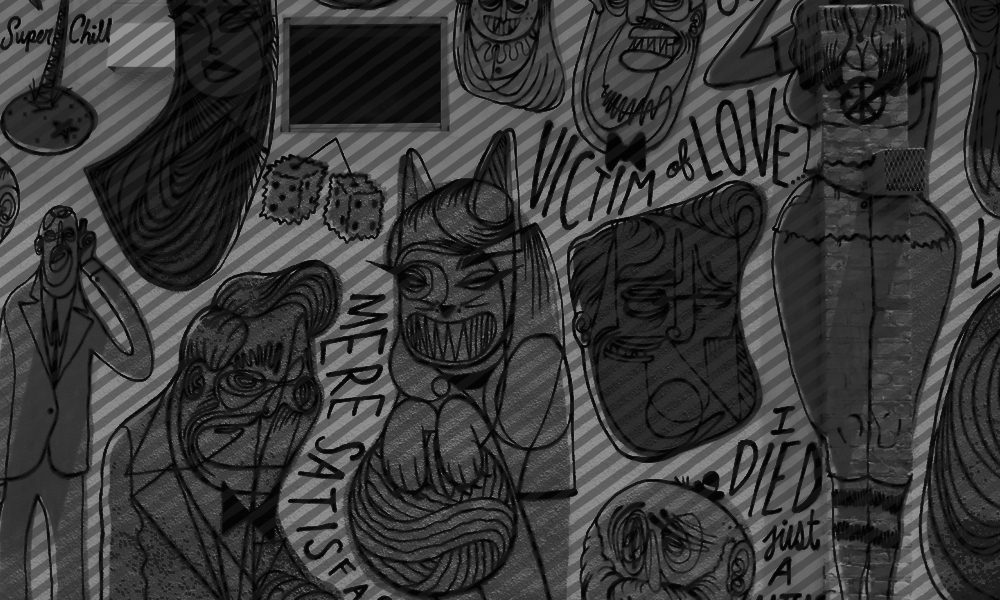Seeing Beneath and Beyond the Layers
by Erin Vachon
I think about sight often. How we come to see what we think we see. I think about how often what we see is not what is there, or what was there, or what could be there. To see each other beneath and beyond the layers of fabrication and distance that seem to cover the worlds around us in a thick layer.
Calvin Walds, Flee
Before the world shut down around us, when sitting inside a theatre was still part of the luxury of social life, I alternately belly-laughed and cried at the Australian stand-up comedian Hannah Gadsby as she deconstructed her art: intentional shifts where she created tension only to release it. (Gadsby is also a trained art historian and had a short-lived YouTube series where she lectured on the subject, which you can check out here.)
In her stage show, she somersaulted through traditional joke delivery into critique of the medical field and over to an art history slideshow. Images under her gaze were comic relief as much as they were illustrative of the ways that women were left out of society’s writing process and dismissed by doctors (yes, those were two art puns). When the curtain went down, I realized I had witnessed something singular.
I think about that show often. The communal experience of joy. The unfolding epiphanies as an adventurous writer hopped across genre lines, only to reclaim the whole kaboodle as comedy. As comedy could have been thought of in the first place, if someone else (read: neurodivergent woman) had been marking out the perimeter.
In Flee, Calvin Walds thinks about seeing “beneath and beyond the layers of fabrication and distance,” arriving there through collage, by the very process of layering itself: bits of music, philosophy, photography, lists.
Virginia Woolf wrote about the same preoccupation in A Sketch of the Past:
“[O]ne’s life is not confined to one’s body and what one says and does; one is living all the time in relation to certain background rods or conceptions. Mine is that there is a pattern hid behind the cotton wool. And this conception affects me every day.”
If we’re trying to get at what’s behind the cotton wool, hybrid artists make a case for how we get there. Sometimes a song soars best via a soloist a cappella, but others need the whole darn orchestra, (including the little ding of the triangle at the end.) Learn what instruments are available to you, and when to use them: it’s your song, after all. Play, play, play.
Jenny Browne writes: “Tension created in doing something you’re not supposed to do — what might happen? When you’re uncomfortable, that’s where the energy is.” What are you not supposed to say with your writing? When does your writing hit points of discomfort? Might image-play offer up a way of creating and releasing that tension?
Consider this: a line is just a string of tension, pulled taut from point to point. If we’ve thought about line as word and line as stroke, then line as tension means energy, what you push and pull in your piece as its conductor.
All the ways to read it are the right way.
Sarah Minor on her book Bright Archive, Interview in Kenyon Review
As we wrap up this weekend, consider what your writing would look like, if you hadn’t been shown a page from a book. What potential points of tension and release might have hidden away behind traditional forms? If image-play became part of your regular writing-process, how might “the layers of fabrication and distance” in the world around you lift?
Jumping across the line — away from the safety of writing in traditional form — and into the pool of image, of hybrid: that’s a weird venture you’ve undertaken, fellow workshopper. We’ve walked the winding path of Sarah Minor, excavated alongside Sarah Sloat, become illustrators with Lynda Barry, and peeled back layers with Calvin Walds. Whatever you take with you from this workshop, I hope you jump across lines that no one has even noticed yet.
Questions & Exercises
Since this is our last day together, these are questions to help lift the layers: places to play rather than settle. If you’d like, have some fun with these, now or in the future:
- What are the recurring points of tension that you return to in your work? What strings are still left to pull?
- Sarah Minor’s book Bright Archive demands a reading where we physically turn the book in our hands, a shifting of the reader’s relationship to the page. How might writing with an intention toward this type of reading change your work and its contents?
- What are some other creative roles that you identify with, amateur or professional? (For example, I bake a mean Momofuku naked cake.) What would your writing look like if you layered your writing with this skill or talent via image-play?
- Purchase some coloring pencils. Make it a practice to doodle in the margins of your own writing, or right on over the text.
Recommended Readings
(note: I’ve listed a quite a few pieces here as resource, rather than requirement)
- “The Designed Essay: Design as Essay.” Ander Monson.
- “Manifestos: Anderson’s Rules for Writing Found Poetry.” E. Kristin Anderson. Cotton Xenomorph.
- “Worst-Case Scenario.” Jennifer Wortman. DIAGRAM 17.3
- “Depression Inventory.” Vincent Scarpa. DIAGRAM 16.5
- Visual Poetry, Rodney Gomez, The Indianapolis Review.
And behold…
- Sarah Minor’s amazing resource list on Visual Writing. [You clearly don’t have to read all of these, but it’s too wonderful not to share.]
